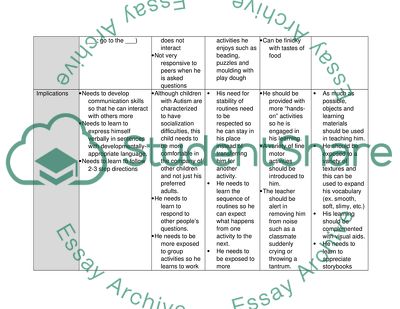Cite this document
(Lesson for a Student with Autism Coursework Example | Topics and Well Written Essays - 3250 words, n.d.)
Lesson for a Student with Autism Coursework Example | Topics and Well Written Essays - 3250 words. https://studentshare.org/education/1845258-case-study-student-with-a-special-learning-need
Lesson for a Student with Autism Coursework Example | Topics and Well Written Essays - 3250 words. https://studentshare.org/education/1845258-case-study-student-with-a-special-learning-need
(Lesson for a Student With Autism Coursework Example | Topics and Well Written Essays - 3250 Words)
Lesson for a Student With Autism Coursework Example | Topics and Well Written Essays - 3250 Words. https://studentshare.org/education/1845258-case-study-student-with-a-special-learning-need.
Lesson for a Student With Autism Coursework Example | Topics and Well Written Essays - 3250 Words. https://studentshare.org/education/1845258-case-study-student-with-a-special-learning-need.
“Lesson for a Student With Autism Coursework Example | Topics and Well Written Essays - 3250 Words”. https://studentshare.org/education/1845258-case-study-student-with-a-special-learning-need.


